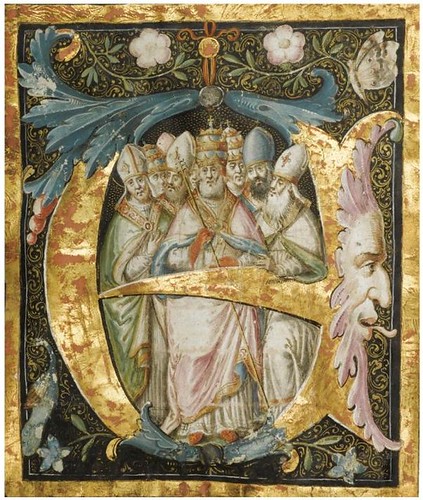
This individual illuminated manuscript initial (spliced together from screencaps) exists as a fragment and was probably produced in Italy in about 1500. It is one of three vellum cuttings taken from choirbooks on sale as a set next month.
Quoting from the Sothebys* catalogue :
"very large historiated initial 'E', 200mm. by 178mm., in burnished gold and coloured acanthus-leaf sprays and an ornamental face, enclosing eight popes and bishops, all on black grounds heightened with liquid gold scrolls and surrounded by naturalistic flower-cuttings, a butterfly and a peacock, all within a rectangular burnished gold frame"
*requires registration to view their sales brochures
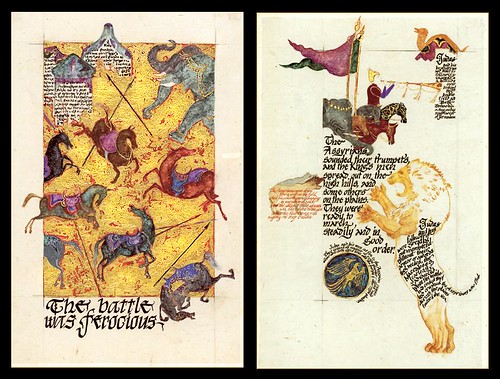
This 22-karat gold leaf and egg tempera illumination on hand made paper comes from the 'Hanukkah Illuminated: A Book of Days' project, © Ellen Frank Illumination Arts Foundation, where there are a number of very interesting modern works featuring manuscript techniques of old on display.
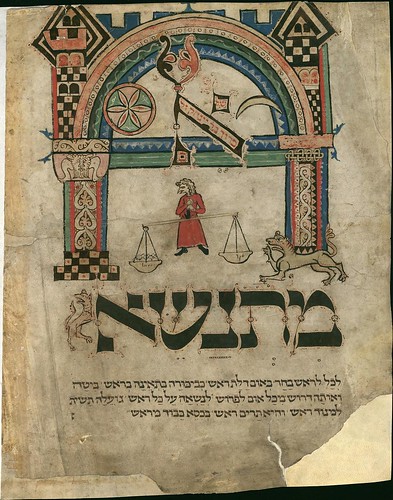
The Jewish National and University Library in Jerusalem have a site devoted to the Mahzor Worms, a two-volume parchment festival prayerbook from the 13th century, featuring Ashkenazi calligraphy, with illumination and decoration in ink and color. [Also see this Metafilter post with links to a variety of Judaica manuscripts]
"The Mahzor was in use in the community of Worms until the synagogue’s destruction on Kristallnacht, November 1938. It was rescued by the city’s archivist, who hid it in the cathedral. In 1957, following legal proceedings in Germany, the manuscript was transferred to the Jewish National and University Library in Jerusalem."

The tetragrammaton - יהוה (Yod, He, Waw and He) - is the Hellenised Hebrew spelling of the name of God - without vowels - in the Old Testament, rendered as Yahweh or Jehovah or Adonai or Lord.
The old fellow in the image is 'holding' the Tree of Life or Kabbalah of Judaism, the ten-stage (sephiroth) path in the physical and metaphysical planes to God. The symbology has been co-opted, with mystical permutations, in various branches of the esoteric systems such as Hermeticism, Gnosis and the like. ['Portae Lucis' means the doors of light]
The book is recorded at the Bavarian State Library as: 'Giqatila, Yôsef Ben-Avraham / Ricius, Paulus: Portae Lvcis H[a]ec est porta Tetragra[m]maton iusti intrabu[n]t p[er] eam, Augustae Vindelicoru[m] 1516 [VD16 J 954]'. Joseph Giqatila was a 13th century Spanish Kabbalistic philosopher.

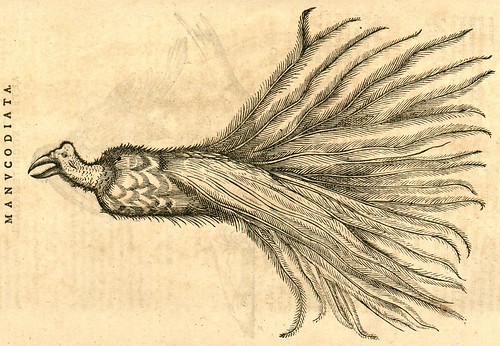
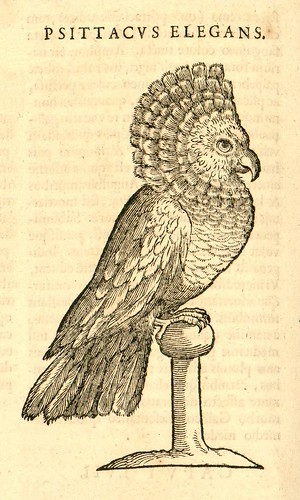
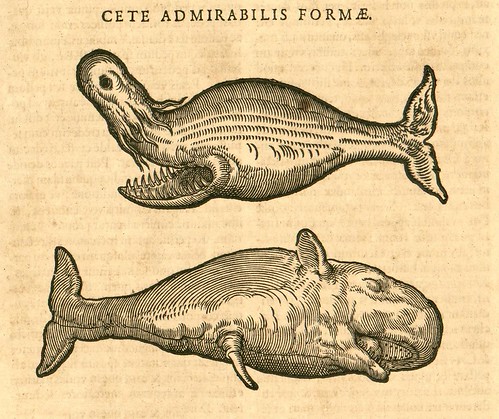

These rather eccentric illustrations come from 'Historia Naturae, Maxime Peregrinae, Libris XVI.', 1635 by Spanish philosopher and scholar, Juan Eusebio Nieremberg. The work, which features more than one hundred and fifty illustrations (they are not all as unusual as these examples), was said to be based largely on an earlier book by Francisco Hernandez, who had been sent to study the fauna and flora of New Spain. Hence, some of the Aztec names for species persist in Nieremberg's book. It is regarded as an important early source work for the Americas, and particularly Mexico. {Some few of the illustrations I have seen before from other sources - eg. Gesner mid-1550s}
The detail images above were sourced from Strasbourg Universities Library (click folder icon top left once inside to load thumbnails).
However, I would now (after just discovering it) very much advocate looking at this book in the excellent flash/turn-the-pages site at the Library of Congress (click 'explore' then 'contents') [part of the Exploring the Early Americas web exhibition]

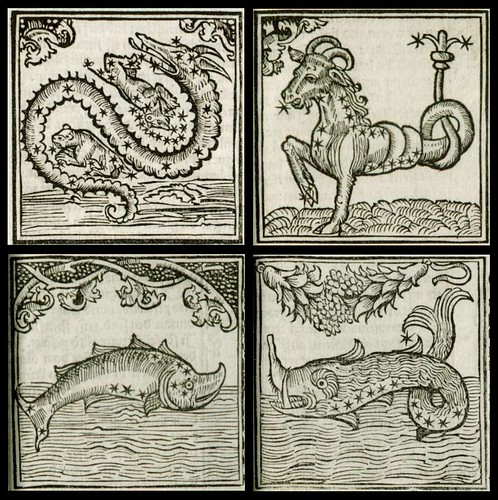

"Johannes Müller von Königsberg, called Regiomontanus, was arguably the most important astronomer of the fifteenth century. [..] It is often said, and justly, that Regiomontanus set the agenda for the reform of astronomy to which Copernicus, Tycho Brahe and Kepler all contributed." [Cambridge University; nb. multiple pages]
"Printed calendars and almanacs became extremely popular in the fifteenth century and provided ordinary people with the basic knowledge required to plan their daily routines. The market for calendars was first tapped by Gutenburg, who published a calendar which calculated the times of new and full moons and planetary positions, with readings every two to three days. All earlier calendars, however, were superseded by those of Regiomontanus (1436-1476) whose calculations were far more accurate[.]" [University of Glasgow Library Book of the Month]
The images above were found in the 1512 edition of the Regiomontanus 'Kalendar' come from Bayerische Staatsbibliothek.

This ~1920s advertisement comes from a newish French regional site, Archives Départementales de l'Hérault, about which I have approximately zero recollection.
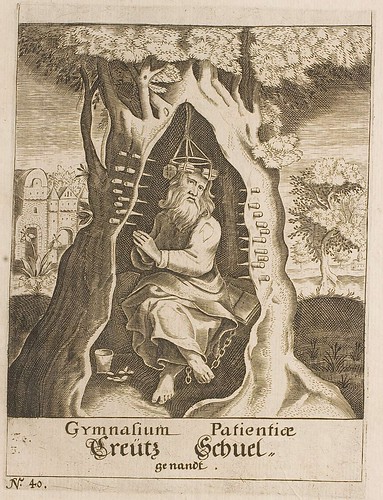
From HAB: 'Gymnasium Patientiae' - by Jeremias Drexel, a Jesuit writer of devotional literature and Professor of Rhetoric/Humanities. [1662 Ed.]
"In this work, Drexel compares the sorrowful life to a school, which man has to pass through. Drexel had been treating this matter before as a preacher to the Bavarian electoral court. The German translation by Joachim Meichel was published in 1630 under the title "Creutz-Schul"." [source]
{There is the odd mention of this being an emblem book, although it only has a few engravings, none more striking that this bewildering example.}

From the early 1950s Persian book of bedtime(!) stories: 'What did Flower do to the Weed', kindly submitted by Kristen Alvanson, an artist living in Shiraz, Iran. She has posted more of the book images to her blog, Lumpen Orientalism: one, two, three.



Gottfried Benjamin Hancke was a Silesian baroque lyricist and these images come from his book of poems from 1731 (1750 Ed. shown),

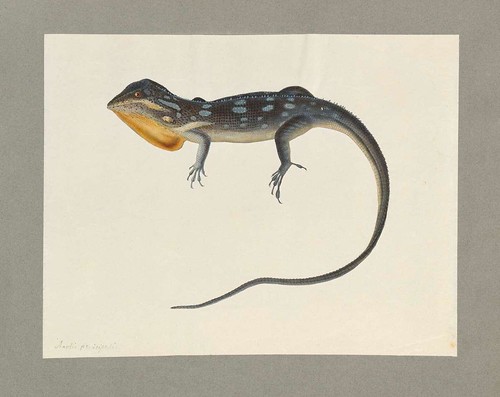
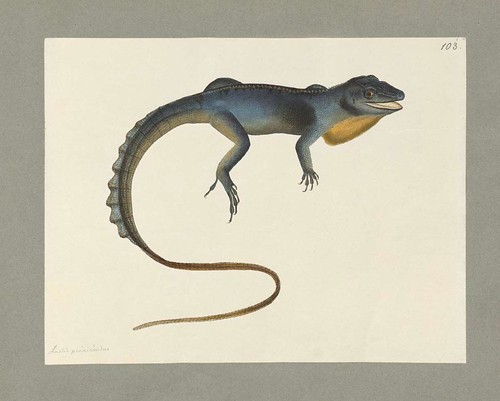
From BSB Cod.icon. 48 a(2 - 'Aquarellzeichnungen von Reptilien II', an anonymous album of watercolour sketches of reptiles from 1805-1808.

The frontispiece from Athanasius Kircher's third and final book on magnetism, 'Magneticum Naturae Regnum', 1667 at HAB, Wolfenbüttel.
"Ultimately, Kircher saw magnetic attraction and repulsion as the lingua franca of all creation, governing friendship, love, sympathy, hatred, chemical reactions, planetary action, heliotropic and selenitropic plants, medicinal plants and stones, the wind, hydraulics, the tides, musical harmony; even the nature of God himself, whom Kircher deemed 'the Central Magnet of the Universe'". [source]
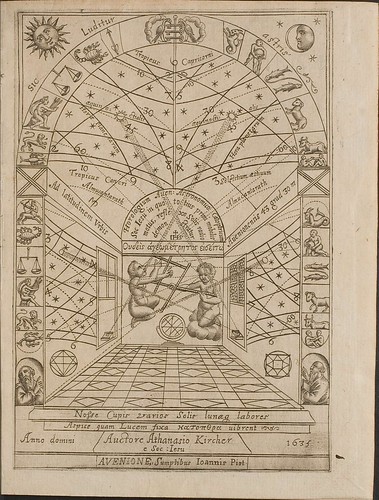

One of Athanasius Kircher's earliest books was his treatise written in Avignon on sundials and published in 1635, 'Primitiae gnomonicae catoptricae', available at HAB. The Astronomical Observatory of Capodimonte has some commentary in Italian [translation]. {They have some nice large - unrelated - frontispieces too, as part of their exhibition site.}
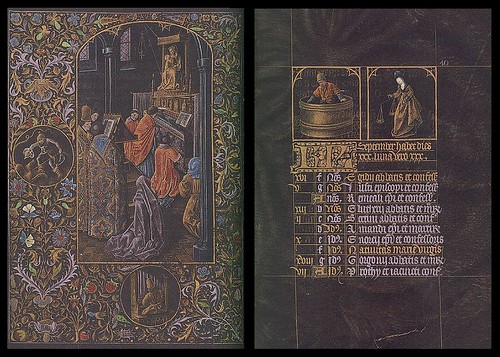
Codex Vindobonensis 1856, published in Vienna in 1930 - "This is a facsimile of Vienna Codex 1856, a Burgundian Manuscript of c.1470 written and illuminated on black vellum." [nb. 1856 is a number, not a date] D & D Galleries have all the illuminated pages out of this unusual manuscript available.
[Also see UPDATE at end of post below]
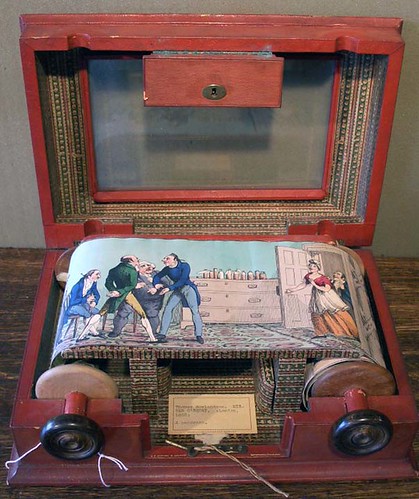
The ever excellent Princeton Graphic Arts blog posted some images from an intriguing specimen in their collection: "a scrolling panorama made up of 12 unsigned, hand-colored etchings, with a narrative in verse, attributed to [Thomas] Rowlandson and titled 'Mister O’Squat'.
Update (June 2011): The whole scroll is now viewable in a zoomify frame (via).
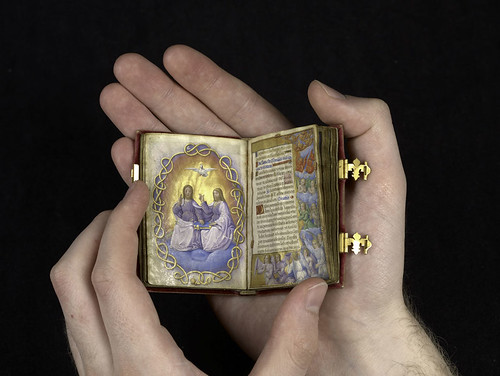
The whole of this exquisite miniature illuminated manuscript, the Queen Claude Prayer Book, is available at The Morgan Library and Museum website. It is definitely worth it to zoom in using the (good!) flash magnifier.

One of the benefits of alerting Aeron (of Monsterbrains) to significant new websites (in this case, the Bodleian Manuscripts collection, mentioned the other day) is the sure knowledge that he will unearth twisted gems such as the image above:
'Fifteen Signs of the Last Judgment'. Manuscript page from the Livre de la Vigne nostre Seigneur, dated 1450-1470.'
Speaking of Aeron, Drawn! points out his 1000 Beasts set on flickr and they are for sale.
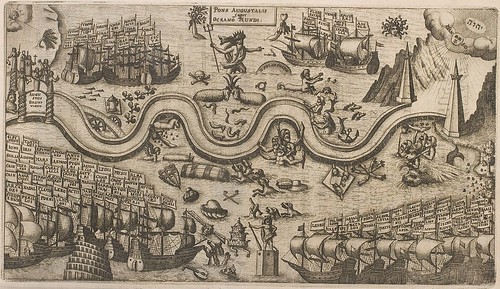
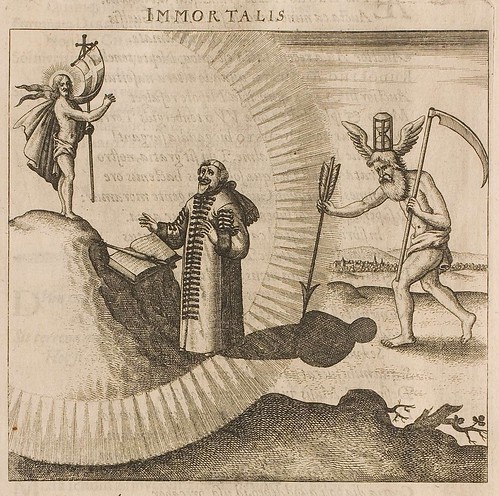
'Fautorum & Clientum Ministrorum Vota & Mele Natalem ... Dn. Augusti, Ducis Brunovici Et Lunaeburgi ... In aula avita Guelphorum Decimo nempe Aprilis Avide & devote Septuagies & sexies excipientia Anno Christi, M.DC.LIV.' 1654 at HAB.
This intriguing work relates to Augustus the Younger (Duke of Brunswick - Wolfenbüttel) and was produced in the last decade of his life. He is another of the great bibliophiles and cultural patrons of the Renaissance/Early Modern periods. His large collection of books formed the basis of the Herzog August Bibliothek in Wolfenbüttel so he is a favoured historical figure with respect to BibliOdyssey. Not so favoured, however, that he will be usurping the mantle of (unofficial) patron of BibliOdyssey from Ottheinrich any time soon. Despite his many good qualities, Augustus is also known to have sent seventy witches and sorcerers to their deaths between 1590 and 1610 in his capacity as Chief Judge of his estate.
The top image is particularly worth seeing in larger format. It seems to be something of a religious homage to Augustus, and packed full of symbolic imagery. The figure in the second image appears to be the spitting image of the Duke.
But wait! there's more: recent bookmarks and the link list.
UPDATE: The Morgan Library Black Book of Hours has been digitised in full (Oct. 2011)




No comments:
Post a Comment